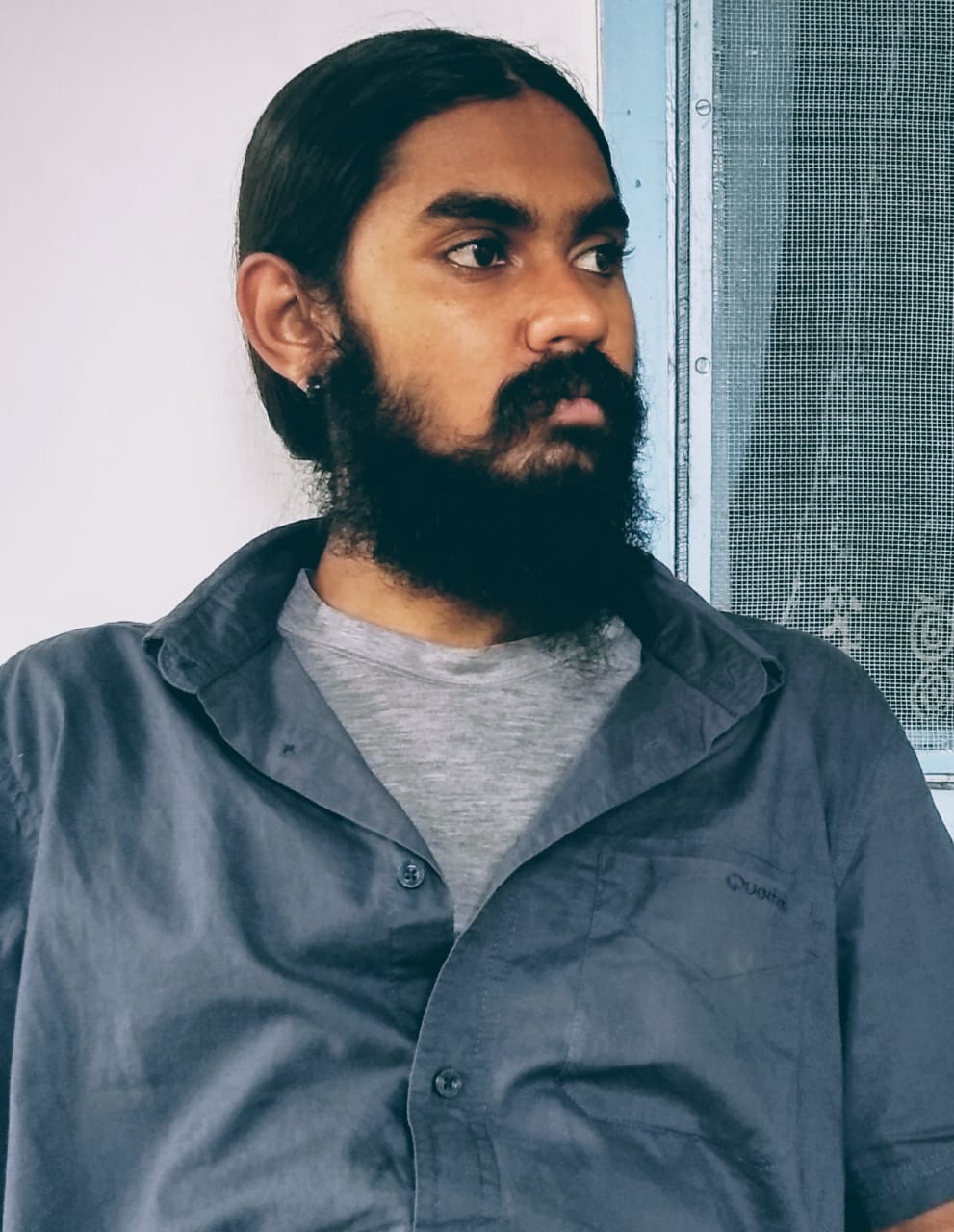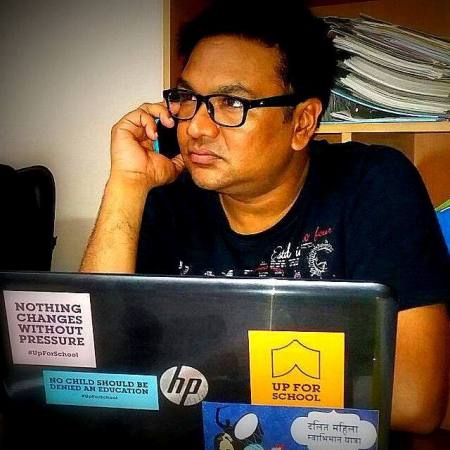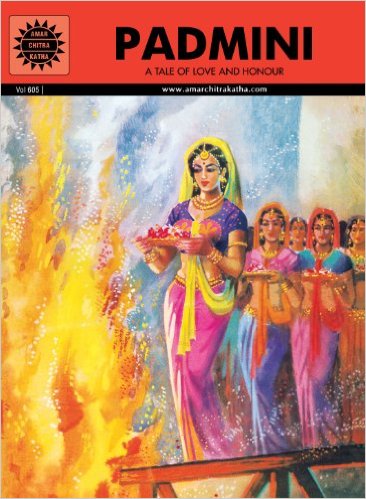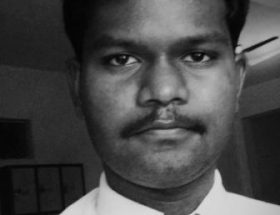Veeravenghai Vinith Kumar
 This article does not presume to produce any new, ground-breaking insight. It is only a reflection of my disagreements with a film that has, for some reason received a lot of appreciation for its portrayal of the incidents that surrounded PhD scholar, Rohith Vemula’s death.
This article does not presume to produce any new, ground-breaking insight. It is only a reflection of my disagreements with a film that has, for some reason received a lot of appreciation for its portrayal of the incidents that surrounded PhD scholar, Rohith Vemula’s death.
The film in question is titled ‘We have not come here to die’, made by Deepa Dhanraj, a much revered documentary filmmaker of Women’s Movements. This documentary though revolves around the death of Rohith Vemula, a PhD scholar from the University of Hyderabad (UoH).
The film begins with the news of Rohith’s death to a backdrop of a normally functioning city. A couple of frames into the film we are met with slogans raised in Hindi that read, ‘Rohith teri khoon se inquilab aayega’ and ‘arey kitne Rohith ko maroge, har ghar se Rohith niklega’. The filmmaker presents the first glimpse of what she intends to do with the film. It is clear that we have to come to terms with the fact that Rohith is dead but that his blood will ignite the flames of revolution.
These lines I think, echo the kind of revolution that they wish to bring. While one needn’t say much about the ‘revolution’ that will come to pass but a certain truth about this revolution is contained in these lines. Why would a ‘Rohith’ come from every house in the country? Was Rohith’s death such a commonplace happening? A few seconds later, a dialogue by a lady from ‘Makkal Mandram’ describes how Dalits have to fight for everything in their life but the only thing that they get without any struggle is death and that they seem to take very happily. Now how can this be so commonplace? Or is it?
With Facebook posts and interviews of friends, the film traces Rohith’s entry into the University of Hyderabad and then his journey from SFI (Students’ Federation of India) to ASA (Ambedkar students association). This journey entails an important aspect of his life, reading Babasaheb Ambedkar. This also acts as an entry for the film to talk about Babasaheb and talk it does, of the only thing that Savarna intellectuals like to talk about him, the Indian Constitution. The film here, in a completely nonchalant way, drops on us the ‘progressive’ way to narrate the story of caste.
It says that ‘the story of caste goes back thousands of years. But we can begin telling it from the day Dr. Bhimrao Ambedkar signed on the Indian Constitution’.
But why should we tell the story of caste from that day? The story does not start there and Babasaheb Ambedkar made sure to tell us where it started. Why then would we ignore the beginning?
I have noticed that all Savarna filmmakers now like to quote Babasaheb Ambedkar in their films. Most of their quotes though come from his speeches in the constituent assembly keeping in line with their obsession of restricting him to the position as the ‘Chairman of the Constitution Drafting Committee’. While we also celebrate this part of his legacy they insist on only remembering this.
Not long after, we get the answer to why the filmmaker insists that we start the story of caste from the day Babasaheb Ambedkar signed the Constitution of India while also disclosing her true intention of bringing up Babasaheb Ambedkar into the film, Reservations!
The camera inconspicuously travels back to UoH after. This brief break from the narration of events around Rohith’s death can now only be seen as a proper introduction to Rohith, an introduction as a Dalit-scholar; a product of reservation; (to be understanding of the filmmaker) I think this was just so that we don’t miss the entire picture about Rohith and who he was, considering reservations define Dalits in ‘Independent India’.
Back in the university, a confrontation between students who want to shut down the Life sciences Department and those who are opposed to it plays out. The film here manages to show us what students who are supposedly ‘driven by academic motives’ (meritorious savarna) think about the blockade. Dialogues of how students from Arts and Political science departments are interfering with ‘proper research’ and how the lives of so many students are being disrupted for the sake of one can be heard. This scene finds conclusion with D. Prashanth (a friend of Rohith’s) stating that ‘fraternity and brotherhood do not exist anymore and that we cannot allow anymore Rohith’s to die’. The filmmaker I think does justice to how this scene plays out. It manages to turn things inside you.
But right after this scene, the filmmaker decides to present to us another story, of an innocent savarna. The interviewee presenting this story describes how she was not aware that 5 students were living in Velivaada and how she never understood their pain. But when she heard the news of the death, ‘a weird chilliness in the air’ surrounded her. She goes onto elaborate how she never thought that this could happen and that a person would be killed. Who is this innocent person? And why does the filmmaker place her in the film, in this particular place in the film?
Right after the filmmaker manages to antagonize some students, who maybe savarna, she chooses to situate an ‘innocent savarna’ who most definitely is sad about Rohith’s death. This can be read I think only as a reminder to Bahujan that we cannot hate all savarna, there are innocent ones who would be sad if you die.
The film continues to document the incidents around Rohith’s death and at this juncture begins to talk about the role of ABVP and BJP. The filmmaker here shows us how the ABVP did not allow the screening of the film that ASA had planned and how they tackled the ‘no capital punishment’ stand of the ASA with patriotism and nationalism. But why is ABVP so keen on attacking ASA? The filmmaker places yet another interview here to explain the reason for ABVP and BJP’s attack on ASA. The interviewee here gives us two reasons as to why these attacks were aimed at ASA. One being that they stood for the annihilation of caste and the other is that there was a ‘composition of Dalits and Muslims coming together’ in ASA. She later translates this as a big threat to the ruling class because it is unity of the oppressed. At this point I am forced to ask, but isn’t annihilation of caste THE fundamental threat to the ruling class? But the filmmaker is more interested in Dalit-Muslim unity. A lot has already been written about the concept of ‘Dalit-Muslim unity’ and how it homogenizes Muslims as a group and thereby allowing Ashrafs and Syeds to operate within the oppressed tag. Pasmanda politics seems to deliberately evade the filmmaker like all other secularwaadis.1
Alas, a brief moment of sanity finds the film as one of Rohith’s friends; Vijay Kumar’s interview is showcased. In this interview, he talks about how the savarna cannot fathom Dalits fighting for their rights and that this is why BJP has unleashed its venomous fangs on ASA. He also says that ASA is necessary for the next generation Bahujan who find their way into this university given that they (BJP) want to make all universities Brahmin agraharas.
This brief moment of sanity though is soon met with another interview that can only be perceived as an insult to Rohith’s struggle. The interview talks about how all parties came together irrespective of their ideologies, which seem to be happening a lot in the recent past. But the pivotal argument in the interview is that this sort of thing can happen to any student. If this can happen to ‘any’ student, why didn’t it happen to ‘any’ student in the past? Why was it Rohith and why is it almost always a Tabrez Ansari?
While presenting the role of the Brahmin Indian state in the death of Rohith the film surprisingly does a good job of narrating the experience of the Dalit students in the university. The film also engages with the question of Rohith’s caste in a way that is appreciable.
Journeying into the consecutive sequence of the film, the narrator talks about how none of the political parties came forward to help the 5 students who were suspended and that this resulted in Rohith’s death.
‘With cases filed against BJP politicians, opposition parties saw an opportunity and rushed in.’ But’ it was students across the country who turned Justice for Rohith into a historic movement.’
Notice the BUT in the narration and how this manages to create a sense of universalization of students, Dalits and Brahmins alike, Left and Ambedkarite alike. The images on the screen though tell us a different story. Majority of the frames have students with placards that read heroic rhetoric with names of their party below in bold, AISF, AISA, KYS, and SFI are among ones that are most easily visible.
This point in the film marks a conscious shift into the real story the film would like us to hear, a story of apparent unity. With a ‘montage’ of fiery bites from ‘progressive voices’ like that of Umar Khalid and Anirban Bhattacharya, the filmmaker reveals the true purpose of the film. Rohith’s death goes from being a fight against CASTE to a fight against caste, communalization, and fascism. From these bites we learn that the Indian state is not bothered by Dalits fighting for ‘Dalit rights’, Muslims fighting for ‘Muslim rights’ and students fighting for student rights but has a problem when connections start to appear. The filmmaker quite easily manages to level all three categories and pit them as a fight against fascism. A rather apparent solution starts to appear at this point, ‘UNITY IN DIVERSITY’.
The film now moves to Una along with Radhika Vemula to collect more evidence and here we get introduced to yet another product of this ‘unity craze’, Jignesh Bhai Mevani. He describes how there are no connections between Dalit protests because ‘there is no program, no ideological framework’. Jignesh seems to be a hit with these progressive secular activists, filmmakers and intellectuals alike. He too talks about the bringing together of Dalits who have been scattered.
But in the midst of all of this, there is also a call to Dalits to stop disposing of animal carcasses. In a gathering of thousands, Jignesh takes an oath, with the gathering that they will not clean sewers anymore or will they dispose of animal carcasses.
Amidst the jubilations, it fills one with, it is also important to note that there were no placards or flags with party names like AISF, SFI, AISA, KYS, etc.
The film in the latter half documents the conversion of Radhika Vemula and her other son to Buddhism. Here the filmmaker strategically places an interview from D. Prashanth. The interview states that caste cannot be annihilated by Dalits and that it the Caste Hindus who can annihilate caste. Why is the onus of annihilating caste placed upon Dalits, to begin with? The term ‘caste hindu’ seems to be an umbrella category for savarna and OBC alike. By saying that caste can (only) be annihilated by the caste Hindus, one also places the power of liberation from the caste fold at the feet of the Brahmin. And to imagine that the Brahmin will change himself and the structure is only imaginary at best. The filmmaker’s caste guilt seems to me to be the reason that drives this scene like most other in the film. This guilt also seems to be the foundation on which the unity narrative operates.
The film finally gives to us in plain words what it has been trying to say for over an hour and a half.
‘If justice for Rohith means punishing the accused, it may never come to pass. But if it means arriving at a new understanding in the fight against discrimination and for fraternity, that moment may be here.
It is clear that even the deaths of Dalits cannot be solely for their liberation from the caste fold, it needs to be for a cause that the savarna will rally behind.
In conclusion, I think a more appropriate title for the film would be ‘Why we have come here to die’.










